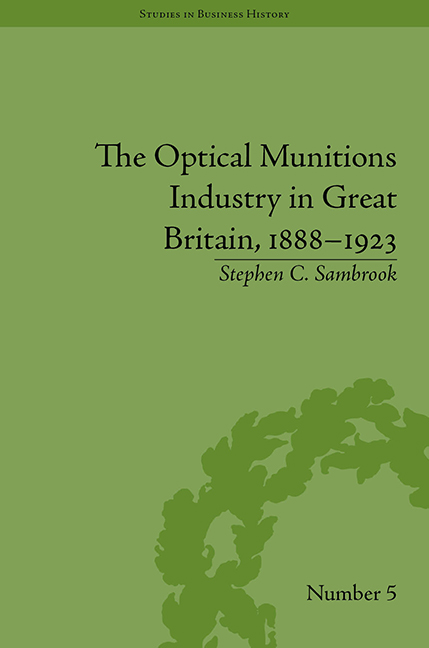Book contents
- Frontmatter
- CONTENTS
- Preface and Acknowledgements
- List of Figures and Tables
- List of Technical Terms
- Introduction
- 1 The Emergence of the Industry, 1888–99
- 2 The Growth in Importance from the Boer War to 1906
- 3 Expansion and Consolidation, 1907–14
- 4 The Impact of War, August 1914 to mid-1915
- 5 Industrial Mobilization: The Ministry of Munitions and its Relationship with the Industry
- 6 The Industry's Wartime, 1915–18
- 7 Industrial Demobilization and Implosion, 1919
- 8 Adaption and Survival, 1919–23
- Conclusion
- Notes
- Works Cited
- Index
3 - Expansion and Consolidation, 1907–14
- Frontmatter
- CONTENTS
- Preface and Acknowledgements
- List of Figures and Tables
- List of Technical Terms
- Introduction
- 1 The Emergence of the Industry, 1888–99
- 2 The Growth in Importance from the Boer War to 1906
- 3 Expansion and Consolidation, 1907–14
- 4 The Impact of War, August 1914 to mid-1915
- 5 Industrial Mobilization: The Ministry of Munitions and its Relationship with the Industry
- 6 The Industry's Wartime, 1915–18
- 7 Industrial Demobilization and Implosion, 1919
- 8 Adaption and Survival, 1919–23
- Conclusion
- Notes
- Works Cited
- Index
Summary
By 1914 armies and navies had become dependent on optical devices for much, and sometimes all, of their ability to use their weaponry effectively. That was particularly true for the major naval powers whose battleships and submarines were practically impotent without their rangefinders, telescopic gun sights and periscopes. Land forces were not so totally reliant but, even so, all deployed optics on an increasing scale and would have been hard pressed to counter an enemy in their absence. The seven years running up to the start of the First World War saw optical munitions production grow at an increasing rate and by 1914 a clearly identifiable sector of industry was engaged permanently in the production of such instruments which, with few exceptions, had no civil applications.
Only a small part of the optical instruments trade was engaged in this work, reflecting not just the specialized nature of what was being made but also the contemporary scale of demand for military and naval optics. That demand grew after 1907 partly because advances in optical technology permitted the creation of new instruments but even more because developments in weapons technologies and increasing political instability created a climate that encouraged European states in particular to increase their expenditure on armaments and take up equipment which increasingly depended on optical instrumentation for its effectiveness. For the first time, the British War Office became a systematic buyer of optical munitions, greatly increasing its spending in the last two years of peace.
- Type
- Chapter
- Information
- Publisher: Pickering & ChattoFirst published in: 2014



